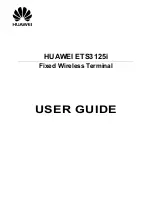
MERLIN LEGEND Communications System Release 5.0
Feature Reference
555-650-110
Issue 1
June 1997
Features
Page 611
Transfer
Transfer return calls are identified by call type and by the name and
extension number to which the call was transferred. The second line of
the display also shows the caller information. When an MLX display
telephone user receives a transferred call, the display shows the type of
call and the caller information on Line 1. When an inside call is being
transferred, the display shows the extension number or line/trunk number.
When an outside call is being transferred, the display shows either the
line on which the call came in or the caller’s telephone number—if
PRI-based number identification or Caller ID is available. The transfer
originator is shown on Line 2.
When an MLX display telephone user makes a voice-announced transfer,
the display on his or her telephone shows
Announce to
. After the transfer
is completed, the user’s display shows
Call Transferred
.
When an MLX display telephone user does not complete a transfer (for
example because Do Not Disturb is on at the destination extension), the
call returns to the originator’s telephone and call information is displayed.
The reason for the incomplete transfer is not indicated.
Do Not Disturb
If a call is transferred to an extension that has Do Not Disturb on and that
has neither forwarding on nor coverage receivers, the call immediately
returns to the transfer originator. If there are coverage receivers, the
transfer returns to the originator after the transfer return time expires.
Fax Extension
If an extension is programmed as a fax extension, the telephone at that
extension is unable to use the Transfer button.
Forward and
Follow Me
Transferred inside and outside calls are forwarded. If a user transfers a
call to an extension with forwarding activated, the person receiving the
forwarded calls hears one ring, indicating an inside call. In addition, if the
person has a display telephone, he or she sees the call information for an
inside call.
Group Calling
A call transferred to a calling group does not return to the originator; the
call is handled just as any other call received in the calling group queue.
For example, the system follows the programmed hunt sequence to
locate an available calling group member, and the call is eligible for a
delay announcement if one is programmed.
A calling group member is considered available for a call while in the
process of transferring a call. He or she is moved to the end of the
most-idle queue (Release 5.0 and later systems).
Voice-announced transfers cannot be made to a calling group. There is
no limit to the number of calls that can be transferred to a calling group.
When an inside caller is transferred to a calling group and no members
are available, the caller hears regular ringback. When an outside caller is
transferred to a calling group and no members are available, the caller
hears regular ringback or Music On Hold, if programmed.
If a call being transferred to a calling group is on an SA or ICOM button,
the button is cleared.
















































